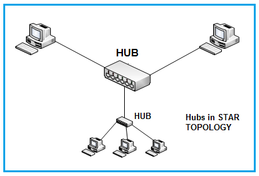Bandwidth Delay Product (BDP) in Computer Networks
Advertisement
The Bandwidth Delay Product (BDP) is a crucial concept in computer networking that helps evaluate the maximum amount of data that can be in transit in a network at any given time. It is calculated as the product of the network bandwidth and the round trip delay. Understanding BDP is essential for optimizing data transmission, especially in high latency or high bandwidth networks.
In this guide, we will explore the BDP formula, its significance, and a practical example to illustrate its application in real-world scenarios.
What is Bandwidth Delay Product (BDP)?
The term is widely used for data communication in various wireless and wired systems. It indicates the number of bits (or bytes) which can be transmitted before an ACK (acknowledgement) is received from the other end. In other words, it’s an estimation of the number of bits “in transit” through the transmission medium.

The concept of bandwidth delay product can best be illustrated as shown in the figure above.
We can think of it as a link between two points of a pipe. The cross-section represents bandwidth, whereas the pipe length represents delay. The volume of the pipe defines the bandwidth delay product (BDP).
The BDP defines the number of bits that can fill the link.
Bandwidth Delay Product Examples
Here are some examples of BDP for various systems:
- Satellite network: With a data rate of 512 Kbps and an RTT of 1000 ms, BDP = 512,000 bits = 512 kbits = 64 KBytes
- DSL: With a 2 Mbps data rate (i.e., bandwidth) and an RTT of 50 ms, BDP = 100 kbits = 12.5 Kbytes
- Ultra-speed LAN: With 100 Gbps and a 30 µs RTT, BDP = 3 Mbits = 0.375 Mbytes
What is the Purpose of Bandwidth Delay Product?
- It helps in determining the maximum amount of data on the network path at any time instant. At this time, data has been transmitted but not acknowledged yet.
- A network having a larger bandwidth-delay product with greater than bits is known as a long fat network.
- One such example of such a long fat network is a Geostationary satellite link, as it will have a higher end-to-end transit time as well as link throughput.
- If the amount of data to be transmitted is insufficient in comparison to the BDP, then the transmission link is not considered to be overloaded. Hence, it can be concluded that the protocol is functioning well below the peak efficiency of the link.
Bandwidth Delay Product Formula

The BDP calculation can be done using the equation in the image above:
Conclusion
The Bandwidth Delay Product is a vital metric in computer networks, determining the amount of data that can be sent without overwhelming the network. By using the BDP formula and applying it in real-world scenarios, network administrators can optimize buffer sizes, enhance throughput, and improve overall network efficiency. Whether working with high-speed or long-distance networks, understanding BDP ensures smoother and more reliable data transmission.
Advertisement
 RF
RF






